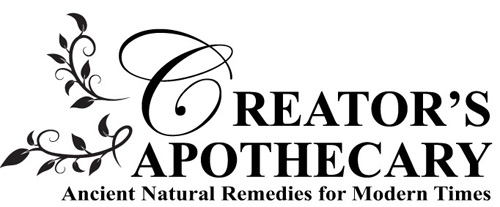Essential Oils Considered Antispasmodic
The following list includes essential oils are considered antispasmodic.
Antispasmodic: A substance to help prevent and ease spasms and relieve cramps, or relieves spasms, convulsions, or contractions. We tend to think of spasms only in muscles of the legs or other physical body parts, however, your colon muscles can spasm, muscles in your GI Tract, and so can your heart muscle, and other smooth muscles in the body.
Essential Oil General Safety Information: Essential Oils (EOs) are highly concentrated extractions of plants and can be harmful if not used carefully. Incorporating EOs into your lifestyle should not cause unnecessary work, but it is important to heed all safety precautions. Never take EOs internally, even if a label say it is safe for consumption by mouth. Never put undiluted EOs directly onto your skin (NEAT) to avoid sensitization of skin, and never apply NEAT to broken skin. Some EOs can cause irritation, sensitization or allergic reactions in some individuals. When using a new oil topically for the first time, perform a skin patch test on a small area of the skin. Some EOs are phototoxic and can cause irritation, inflammation, blistering, redness and/or burning when exposed to UVA rays of the sun. Discontinue using EOs immediately if you encounter any irritation, redness or reaction. Take care when adding EOs directly to bathwater. EOs do not stayed mixed in water, and can, therefore “pool” causing the EO to touch body areas in full strength with the potential for irritation. Some EOs should be avoided during pregnancy or by those with asthma, epilepsy, or other health conditions. Avoid using EOs near the genitals, mouth, nose, eyes and ears. Extreme caution should be used with children and elderly (due to medication mix). Care should be taken when using EOs near animals as not all EOs are safe to use on dogs, cats, birds, horses or other pets. EOs are flammable; keep them away from fire hazards. These statements have not been evaluated by the Food and Drug Administration. These oils are not intended to diagnose, treat, cure or prevent any disease.
Antispasmodic Essential Oils include:
- Anise – Pimpinella anisum –
- Basil – Ocimum basilicum – (strong spasmolytic, analgesic, anti-inflammatory, large range of acute spasmodic and inflammatory conditions with pain, especially of smooth muscles; acute and chronic pain conditions, tension headaches)
- Bergamot – Citrus bergamia –
- Black Pepper – Piper nigrum –
- Cajeput – Melaleuca cajuputi-Melaleuca leucadendra –
- Calamus – Acorus calamus – Use of calamus and its extracts is prohibited in the United States*
- Caraway – Carum carvi –
- Celery Seed – Apium graveolens –
- Cinnamon Bark – Cinnamomum verum – (formerly cinnamomum zeylanicum) (light)
- Citronella – Cymbopogon nardus –
- Clary Sage – Salvia sclarea
- Cumin – Cuminum cyminum –
- Cypress
- Eucalyptus Staigeriana – (powerful)
- Fennel
- Fleabane aka Daisy Fleabane – Conyza Canadensis
- Galbanum – Ferula gummosa or Ferula galbaniflua –
- German Chamomile – Matricaria recutita –
- Helichrysum – Helichrysum angustifolium –
- Idaho Blue Spruce – Picea pungens –
- Idaho Tansy – Tanacetum vulgare –
- Jasmine – Jasminum officinale –
- Juniper aka Rocky Mountain Juniper, Colorado Red Cedar, Mountain Red Cedar, River Juniper, Rocky Mountain, Red Cedar, Seaside Juniper, Western Juniper, Western Red Cedar – Juniperus osteosperma and/or J scopulorum
- Lavender – Lavandula angustifolia –
- Mandarin – Orange Rutaceae
- Marjoram – Origanum maiorana –
- Melissa (Lemon Balm) – Melissa officinalis –
- Mountain Sage – Salvia regla –
- Neroli (Orange Blossom) – Citrus aurantium var. amara –
- Oregano – Origanum compactum CT carvacrol
- Peppermint – Mentha pepperita –
- Petigrain – Citrus aurantium –
- Pink Pepper, Brazilian Pepper Tree – Schinus terebinthifolia
- Roman Chamomile – Chamaemelum nobile –
- Rosemary Verbenon – Rosmarinus officinalis, CT verbenon –
- Sage Lavender (Spanish Lavender) – Salvia lavandulafolia –
- Spearmint – Mentha spicata CT Carvone –
- Spikenard
- Spruce and Black Spruce – Picea mariana –
- Sweet Orange – Citrus sinensis –
- Tarragon – Artemis dracunculus –
- Thyme
- Valerian – Valeriana officinalis –
- Vetiver – Vetiveria zizanoides
- Ylang Ylang – Cananga odorata –
* https://www.drugs.com/npp/calamus.html
References:
- Aromatica: A Clinical Guide to Essential Oil Therapeutics (Vol. 1 & 2) by Peter Holmes LAc, MH
- Reference Guide for Essential Oils by Connie and Alan Higley
- The Encyclopedia of Essential Oils by Julia Lawless
“Beloved, I pray that in all respects you may prosper and be in good health, just as your soul prospers.” 3 John 1:2. “Grace to you and peace from God our Father and the Lord Jesus Christ.’ Philippians 1:2
Til next time,





